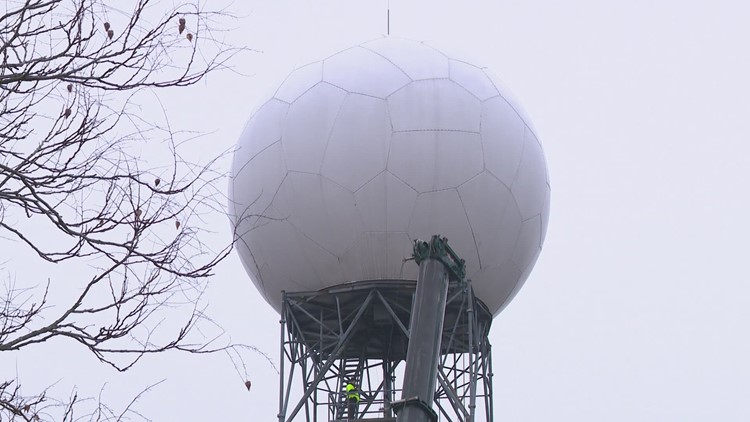ST. LOUIS — The National Weather Service said it now knows why Meteorologists at 5 On Your Side were left in the dark Monday night during a critical moment.
As a storm system brought heavy rainfall, hail and even a tornado to the St. Louis region overnight, the National Weather Service's (NWS) radar went dark. Chief Meteorologist Scott Connell and Meteorologist Garry Frank were forced to track the storm's movement by lightning strikes alone late Monday into Tuesday morning.
"If you are just waking up, hearing sirens and can't see the radar....there are nationwide radar issues," Meteorologist Anthony Slaughter said on X, formerly known as Twitter.
The outage didn't only affect St. Louis. Numerous areas across the country also lost their weather radars, a meteorologist at the NWS office in St. Louis told 5 On Your Side.
After an investigation, the NWS says they have located the issue and made changes to their systems to prevent future outages.
According to Michael Musher with the National Weather Service, the outage was due to an intermittent hardware failure at the NWS data center in College Park, Maryland. Musher said the outage caused the system to repeatedly go down then come back up.
During a normal circuit failure, the data needed to display and disseminate radar information would have been rerouted to a data center in Colorado. However, because the failure on Monday resulted in the flickering service, the automatic change-over did not occur, Musher said.
Musher said the NWS has changed the system's configuration to ensure a lengthy outage like the one earlier this week would not happen again.
The NWS has a goal to operate 97% of the time, which amounts to 11 days worth of outages in a year. Musher said proposed funding for Fiscal Year 2025 could bring hardware and software improvements that would bring that operational capability to 99%.



